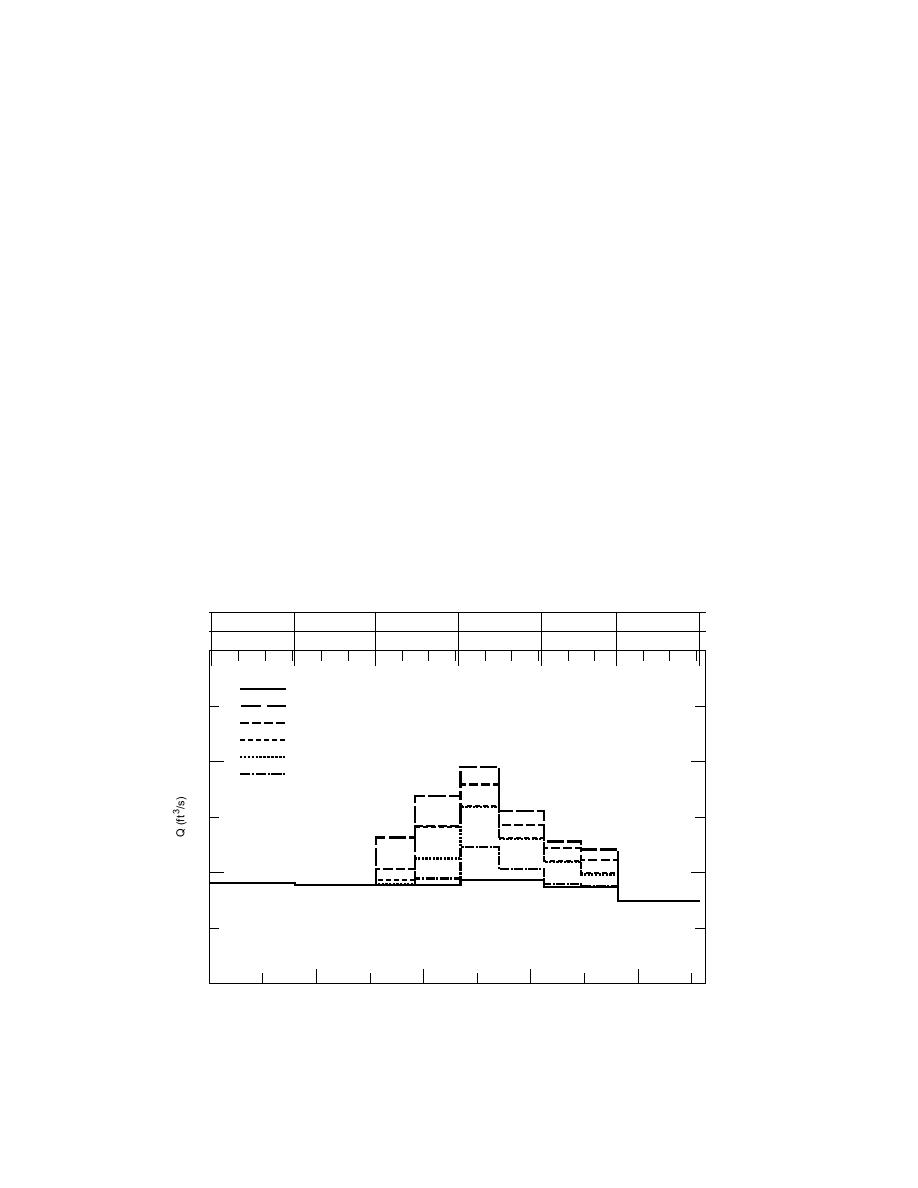
At least for the case of tributary inflows down-
Long-term planning approach
river being at or below their long-term averages, a
This approach would be applicable for develop-
Gavins Point release of 6,000 ft3/s would be clearly
ing a general operating plan or an annual operating
insufficient for most winter months--even in the
plan when little information is available on water
absence of ice. As shown in Table 11, the lowest
supply and weather to be encountered. It relies on
acceptable long-term average release would be ap-
the long-term average incremental discharges devel-
proximately 6,000 ft3/s in March. Although not
oped earlier and statistical representations of wea-
shown in Table 11, the minimum releases for the
ther patterns to provide a suggested release schedule
months of October and November would be 7,200
from Gavins Point Dam.
and 7,100 ft3/s, respectively. January would require
In the section of the report dealing with a compari-
the greatest release from Gavins Point at 7,400 ft3/s,
son of baseline flows with the minimum flows re-
but downstream tributary inflows that differ from
quired for water intake operation, minimum releases
the long-term means could of course change the
from Gavins Point Dam during the winter months
value during any specific event.
were developed assuming no ice effects. As shown in
Table 11, these minimum releases varied from a low
of 6,000 ft3/s in March to a high of 7,400 ft3/s in
January. Those values can be used in conjunction
DETERMINATION OF
with the information presented in Figure 15 on the
REQUIRED RELEASES IN WINTER
probable magnitude of discharge deficit events dur-
Two basic approaches for the determination of
ing each 2-week time period throughout the winter
required releases due to ice impacts have been devel-
for various levels of risk. The result is presented in
oped. The first is based on long-term statistics and
Figure 24, which provides recommended minimum
would be appropriate for annual or long-term plan-
releases throughout the winter season.
ning when little is known about weather and runoff
To use this information, it is merely necessary to
conditions to be expected. The second approach is
select an acceptable value of risk and read the dis-
targeted at determining an appropriate short-term
charges corresponding to that risk line on the plot.
response to an anticipated cold weatherice event.
For example, to protect against 5-year recurrence
Oct
Nov
Dec
Jan
Feb
Mar
10
20
10
20
10
20
10
20
10
20
10
20
24 10 3
Open Water
15%
20%
40%
50%
16
0%
8
0
0
40
80
120
160
Time (days)
Figure 24. Minimum release from Gavins Point Dam (ice-impacted flows).
22



 Previous Page
Previous Page
